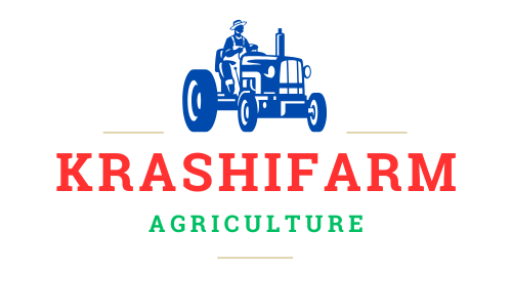Introduction
Agriculture is the backbone of human civilization, providing food, raw materials, and employment for billions of people worldwide. Over the past few decades, global agricultural production has experienced significant transformations due to technological advancements, climate change, policy shifts, and evolving consumption patterns. This document explores the key trends shaping global agricultural production, focusing on crop yields, livestock production, sustainability, trade, and future prospects.
1. Growth in Crop Production
Global crop production has steadily increased due to improved farming techniques, genetically modified organisms (GMOs), and better irrigation systems. The most produced crops include:
- Cereals: Wheat, rice, and maize dominate global production, serving as staple foods for billions.
- Oilseeds: Soybeans, sunflower, and canola have seen rising demand due to their use in cooking oils, animal feed, and biofuels.
- Fruits and Vegetables: There has been a surge in the production of fresh produce driven by health-conscious consumers and better supply chain logistics.
The Green Revolution of the 20th century played a crucial role in increasing yields, and current innovations in precision agriculture, hydroponics, and vertical farming continue to push production limits.
2. Expansion of Livestock Farming
Livestock production has grown significantly to meet the rising demand for meat, dairy, and eggs. Key trends include:
- Increased Meat Consumption: Developing economies, especially in Asia and Africa, are driving higher demand for beef, pork, and poultry.
- Dairy Growth: Global milk production has expanded, with India, the European Union, and the United States being the top producers.
- Aquaculture Boom: Fish farming has grown rapidly, surpassing wild fish capture in recent years, particularly in China and Southeast Asia.
- Sustainable Livestock Practices: Efforts to reduce greenhouse gas emissions have led to the adoption of methane-reducing feed, rotational grazing, and plant-based meat alternatives.
3. Technological Advancements in Agriculture
The integration of technology has revolutionized agricultural practices, improving efficiency and sustainability. Key innovations include:
- Precision Farming: GPS-guided tractors, drones, and sensors optimize water and fertilizer use, enhancing productivity.
- Biotechnology: Genetically engineered crops resist pests and diseases, increasing yields and reducing pesticide use.
- Automation: Robotic harvesters and AI-driven farm management systems reduce labor dependency.
- Data Analytics: Big data and AI help farmers predict weather patterns, optimize supply chains, and reduce waste.
4. Climate Change and Its Impact on Agriculture
Climate change poses significant challenges to agricultural production worldwide. Major impacts include:
- Extreme Weather: Increased droughts, floods, and heatwaves affect crop yields and livestock health.
- Soil Degradation: Intensive farming and deforestation contribute to nutrient depletion and erosion.
- Water Scarcity: Many agricultural regions face declining water availability, necessitating efficient irrigation techniques.
- Pest and Disease Proliferation: Warmer temperatures allow pests and plant diseases to spread to new areas, threatening food security.
Adaptation strategies include climate-resilient crops, agroforestry, and improved water management practices.
5. Sustainability and Organic Farming
Sustainable agricultural practices are gaining importance due to concerns over environmental degradation. Key developments include:
- Organic Farming Growth: Consumer demand for pesticide-free, non-GMO products is driving the expansion of organic farming.
- Regenerative Agriculture: Practices such as cover cropping, no-till farming, and agroecology improve soil health and biodiversity.
- Agroforestry: Integrating trees into farming systems enhances carbon sequestration and provides additional income streams.
- Carbon Footprint Reduction: Governments and agribusinesses are investing in carbon-neutral farming initiatives and sustainable supply chains.
6. Agricultural Trade and Globalization
International trade in agricultural products has grown due to globalization, but it faces both opportunities and challenges:
- Major Exporters: The U.S., Brazil, China, and the EU dominate global exports of grains, soybeans, and meat.
- Trade Barriers: Tariffs, subsidies, and geopolitical tensions impact agricultural trade flows.
- Supply Chain Disruptions: Events like the COVID-19 pandemic and conflicts have exposed vulnerabilities in food supply chains.
- Regional Trade Agreements: Free trade agreements, such as the USMCA and EU-Mercosur deal, influence global agricultural markets.
7. The Future of Agricultural Production
The future of global agriculture will be shaped by innovation, policy decisions, and consumer preferences. Expected trends include:
- Alternative Proteins: The rise of plant-based and lab-grown meat will impact traditional livestock farming.
- Vertical and Urban Farming: As arable land decreases, urban agriculture and vertical farming will become more prevalent.
- AI and Robotics: Autonomous farm equipment and AI-driven analytics will improve productivity and sustainability.
- Climate Adaptation: Governments and organizations will prioritize climate-smart agriculture to mitigate environmental impacts.
Conclusion
Global agricultural production is evolving rapidly due to technological advancements, changing consumer demands, and climate challenges. While the sector continues to grow to meet the needs of a rising global population, sustainability remains a critical focus. By adopting smart farming techniques, investing in resilient crops, and promoting fair trade, the world can ensure a stable and secure food supply for future generations


